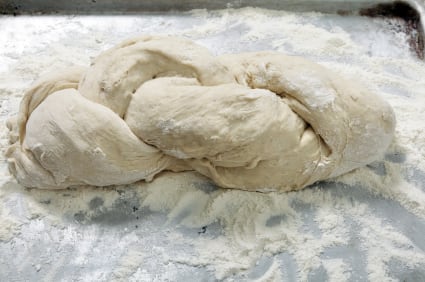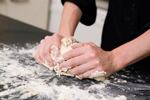Research* presented at the American Society for Nutrition Experimental Biology conference in Boston today indicates that despite manufacturers’ best efforts, Americans’ sodium intakes increased by 63 mg/day every two years from 2001 until 2010, from an average of 3,298mg/day to 3,559mg/day - a 7.9% increase.
The average daily intakes are significantly above the recommendations in the Dietary Guidelines for Americans, which suggest 2,300 mg/day as an upper limit and advise African Americans, people aged over 50 and anyone with hypertension, diabetes, or chronic kidney disease (about half of the US population) to eat no more than 1,500 mg/day.
Sodium intakes from white bread, rolls, salty snacks, fats, oils, and salad dressings have dropped modestly
The research is based on an analysis of data from the government’s National Health and Nutrition Examination Survey (NHANES 2001-2002, 2003-2004,2005-2006, 2007-2008. and 2009-2010) - and was funded by Tate & Lyle.
It revealed that grains & grain products; followed by meat, poultry, fish & mixtures; vegetables; and milk & milk products, were the biggest sources of sodium in the American diet.
While sodium intakes from white bread, rolls and salty snacks, and fats, oils, and salad dressings decreased modestly over the decade, intakes from meat, poultry, fish and ‘mixtures’ (things like meat and pasta meals) increased.
Changes may be due to changes in sodium concentrations of foods, increased consumption of these foods, or a combination of both

Lead author Victor Fulgoni, PhD, senior vice president of consultancy Nutrition Impact, LLC and a former VP of food and nutrition research at Kellogg, told FoodNavigator-USA it was not clear what was driving the increase, as overall calories consumed had not risen - but actually declined slightly - over the same period.
“The changes may be due to changes in sodium concentrations of foods or increased consumption of these foods or a combination of both.”
Roger Clemens: Data doesn’t reflect major sodium reduction efforts of past three years
The Grocery Manufacturers Association (GMA) did not respond to requests for comment on the data, but Dr Roger Clemens, immediate past president of the Institute of Food Technologists and adjunct Professor, Pharmacology & Pharmaceutical Sciences at the USC School of Pharmacy, told us he was “surprised” by the findings.
He also noted that the most significant changes to sodium levels in many foods had taken place in the last three years, so would not be reflected in the NHANES data set analyzed by Dr Fulgoni et al.
“The major sodium reduction efforts have been over the last three years. Importantly, the 2001-2010 interval doesn’t reflect real time assessment, and the tremendous efforts by major food companies to reduce sodium.
“These companies have decreased NaCl usage by hundreds of tons.”
This is a recalcitrant problem that will take years, and some unique thinking, to resolve

As even a cursory read of the mountain of comments filed in the docket on the FDA/FSIS probe into sodium reduction approaches quickly demonstrates, however, many food manufacturers feel like they are stuck between a rock and a hard place when it comes to sodium reduction, said Dr Fulgoni.
They want to do the right thing, but for many firms, the business case just isn't there, he said.
“Our data supports what the IOM concluded [in a major report on sodium reduction strategies published in 2010], that this is a recalcitrant problem that will take years, and some unique thinking, to resolve.”
While large manufacturers in the media spotlight had made great strides, smaller firms were faced with a difficult question, he said.
“Do I spend a lot of time and money reducing sodium, which I’m pretty sure won’t grow my brand, and may even damage it, or do I allocate resources into something that I know will grow my brand?”
Where’s the business case?

And given that low sodium is not a selling point with many consumers (evidenced by the fact that firms are now making ‘stealth’ reductions to avoid antagonizing shoppers) making a return on investment in costlier ingredients, recipe development, sensory testing and changes to manufacturing processes, is a “real struggle”, he said.
In its comments to the FSIS docket, Campbell Soup, for example, noted that a “disappointing taste is not something people get used to, they simply make other choices”, while Nestlé Nutrition noted that sodium reduction was rarely a case of a “one for one substitution with potassium chloride or other salt substitutes, nor can you just reduce the amount of salt without rebalancing the other components in the food”.
Meanwhile, the American Bakers Association said its members had made significant reductions in sodium in many products, but “cannot afford to continue to commit resources to develop products that consumers refuse to buy”.
Facts Up Front
But will the roll out of front-of-pack nutrition labeling schemes that highlight sodium levels on pack such as Facts Up Front encourage consumers to watch their sodium intakes more carefully?
It’s possible, although not likely, speculated Dr Fulgoni. “Sodium content has already been on the Nutrition Facts panel for years.”
*Fulgoni VL, Spence L, Samuel P. Trend in sources of sodium in the US diet over the last decade: Analysis of What We Eat In America (WWEIA)/National Health and Nutrition Examination Survey (NHANES) 2001-2010. Poster at Experimental Biology. Boston, MA. April 20-24, 2013.
